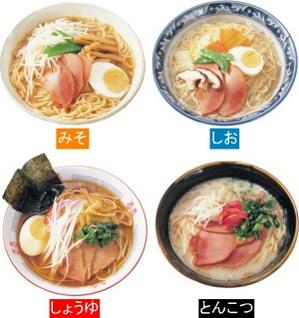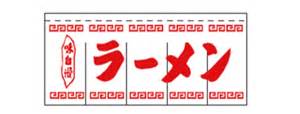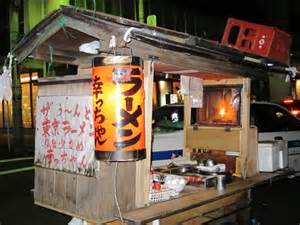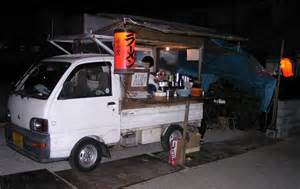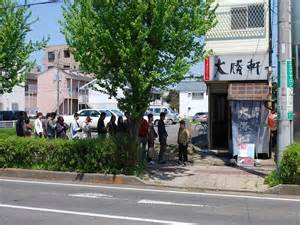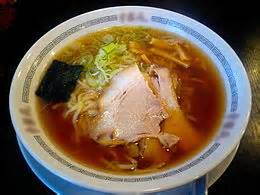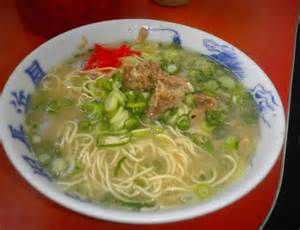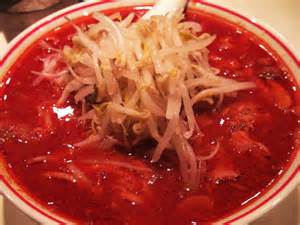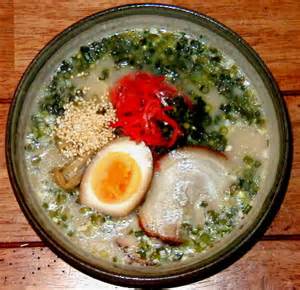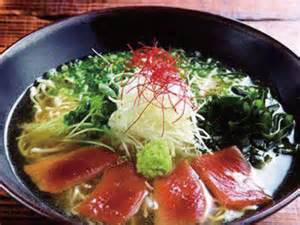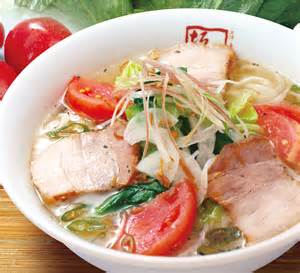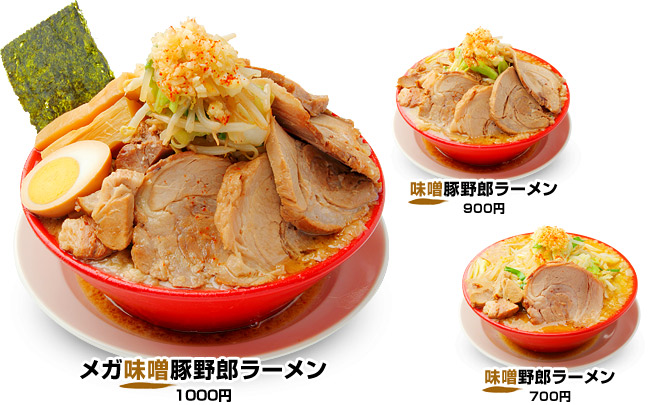Ramen/Chuka Soba
(https://en.wikipedia.org/wiki/Ramen)
(Basic Styles of Ramen in Japan)
After getting your work done, you are hurrying home. Or you are hurrying home after you attended your cram school to pass the entrance exam to private schools. You are starving and shivering in cold wind. Then, all of sudden, you spot the light from Ramenya-san (Ramen Restaurant) with that particular aroma, sticking around your nose! Who can resist this aroma drifting from the very Ramen restaurant? NOBODY! You gotta stop by!
Usually Ramen restaurants or restaurants which serve Ramen in addition to other Chinese cuisines are NOT so big. Look at this picture!
(Probably 500 to 1,000 square feet)
(With this Noren/Shop Curtain)
(Some are MOBILE)
(EFFICIENCY matters!)
(Popularity Makes People Make A Line!)
Unlike Japanese indigenous Udon or Soba, Chuka (Chinese) Soba or Ramen originally came from China. That is why Ramen/Chuka Soba is so greasy. The Chinese use tons of oils and grease when they cook unlike the Japanese. This makes, in a sense, ramen tastes very good!
Basically, Ramen uses 4 types of soup stock – Shoyu/Soy Sauce, Miso (Bean Paste), Shio (Salt), and Tonkotsu (Made from pigs’ bones!). How can you tell? It’s from the color of soup – Black/Soy Sauce, Transparent to White/Shio (Salt), Tan/Miso (Soy Bean Paste), and White/Pigs’ bones like the pictures on top. The Japanese know what they want, and they order whatever variety of their favorites.
(Traditional)
(Tons of Scallions)
(Hot Sauce – Kimchi?)
(Typical Tonkotsu Ramen)
(With Maguro/Tuna)
(Have No Idea What It Is)
(Butter and Milk !?!?!?)
(Vegetable Special)
Main ingredients include Yakibuta (Roast Pork), Moyashi (Bean Sprouts), Negi (Scallions), Beni Shoga (Red Pickled Ginger), Menma (Aspidium), Yude Tamago (Boiled Eggs), Ninniku (Garlic), and so on. Usually the Japanese like Yakibuta (Roast Pork) so much that there are some speciality Ramen restaurants where the price of one bowl of Ramen is determined according to the amount of Yakibuta like this:
(Interesting, isn’t it?)
This is also one of the menu items in Japanese restaurants in US, which you will rarely find because some of the MUST ingredients are not available in US. What a delicacy! How precious! My mouth started watering….
Ordering a Ramen at Ramen restaurants
is NOT difficult.
Customizing the ingredients ARE difficult!
I will show you and teach you how to order Ramen
by customizing it in no time!
Special Trial Lesson $19.99 <– Click here!
ONLY 19 SPOTS LEFT!

